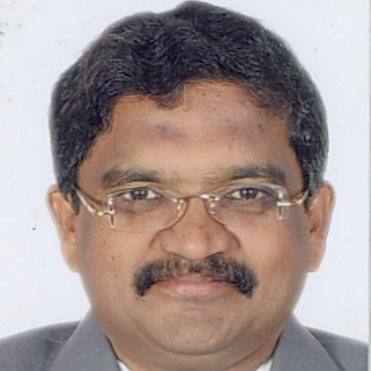
M.Siddappa
Work place: Dept. of Computer Science & Engg. Sri Siddhartha Institute of Technology, Tumkur, India
E-mail: siddappa.p@gmail.com
Website:
Research Interests: Computer systems and computational processes, Artificial Intelligence, Image Manipulation, Image Processing, Data Structures and Algorithms
Biography
M.Siddappa received B.E degree in Computer Science & Engineering from University of Mysore, Mysore, Karnataka, India in 1989, M.Tech from University of Mysore in 1993 and doctrol degree from Dr .MGR Educational Research Institute Chennai under supervision of Dr.A.S.Manjunatha, CEO, Manvish e-Tech Pvt. Ltd., Bangalore. He worked as project associate in IISc, Bangalore under Dr.M.P Srinivasan and Dr. V.Rajaraman from 1991 – 1993. He has teaching experience of 22 years and research of 5 years. He published 35 Technical Papers in National, International Conference and Journals. He is a member of IEEE and Life member of ISTE. He is working in the field of data structure and algorithms, Artificial Intelligence, Image processing and Computer networking. He worked as Assistant Professor in Department of Computer Science & Engineering from 1996 to 2003 in Sri Siddhartha Institute of Technology, Tumkur. Presently, he is working as Professor and Head, Department of Computer Science & Engineering from 1999 in Sri Siddhartha Institute of Technology, Tumkur. He has published nearly 31 papers in national and international journals. He has received best Engineering teacher award from ISTE for the year 2011.
Author Articles
Survey on an Efficient Coverage and Connectivity of Wireless Sensor Networks using Intelligent Algorithms
By M.Siddappa Channakrishna raju
DOI: https://doi.org/10.5815/ijitcs.2012.05.06, Pub. Date: 8 May 2012
Wireless sensor networks are often deployed for data-gathering or monitoring in a geographical region. This paper explains an important issue to maintain the fidelity of the sensed data while minimizing energy usage in the network. Nature inspired computation like evolutionary computation, swarm intelligence etc., which offers practical advantages to the researcher facing difficult optimization problems. The genetic algorithms are used for efficient connectivity and coverage. Single Objective Genetic Algorithms (SOGA) method is used to yield good results in terms of Coverage, but the objective’s graph had shown Pareto optimal designs with differing Endurance. However it is attractive to offer Pareto optimal designs to a user willing to settle for a poorer Coverage in order to gain in Endurance, so that the sensor network lasts longer. This explains concept of Multiple Objective Genetic Algorithm (MOGA) and its implementation and results which are compared to those of the SOGA. Endurance and Robustness to deployment inaccuracy tend to work in the same direction. A MOGA was conducted with the Coverage and Robustness as objectives. The main objective of this paper is to propose new Strength Perito Evolutionary Algorithm (SPEA) method along with clustering, this will reduce the distances between the sensor nodes that increase the efficiency of the nodes and also increase the connectivity. This will increase lifetime of sensors and connectivity.
[...] Read more.Other Articles
Subscribe to receive issue release notifications and newsletters from MECS Press journals